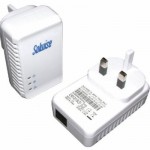Many of the latest LCD, LED TV’s come with LAN port or WI-FI capability. This essentially means that they connect to your home internet connection and these TV’s have applications or apps that can be use internet services, like facebook, twitter or news updates.
Most of the Television’s have WI-FI services capability which means you will need to spend another $50-$70 on a WI-FI adapter to use this service. When I got my TV, the app’s were the deciding factor because I like to stream YouTube, DailyMotion etc and do not like the fact that I have to be infront of the computer/laptop to do this.
American customers has wider availability of contents than us, Canadians due to various country regulations. If you are in the US, based on the Television set, the apps may vary. I have a Samsung TV which means if I were in USA I could get services like netflix, blockbuster’ subscription services. But being in Canada, I can only get free services like twitter, facebook, daily motion, youtube, various games, google maps, history channel updates, some TV guides etc.
In addition to this one of the cool factor of this TV was the ability to share media player content through network. This sharing is possible using DLNA (Digital Living Networking Alliance); DLNA provides an interoperability among digital devices.What this means is that I can stream movies which exist in my computer/Laptop’s hard drive via Media Player (i have version 11). I can assign my movie/video folder that is allowed to share with media player, so that I can limit to what file and folders are shown in the TV. You can also view your photos, mp3 etc using this feature. For more understanding on DLNA please read this blog
Now the TV I purchased has LAN port which is a typical ethernet port very similar to what you see in a computer as well as a WI-FI capability if I get the adapter. I heavily use my internet connection at home for various purposes, for laptops, use with IP TV which means I have a receiver that streams content via internet into my TV, blackberry which is hooked up to WI-FI when I am home & lastly now for my TV. I have a linksys 4 port WI-FI enabled router which makes all this possible. Earlier in my website I have explained how I set up a PPOE connection with my router, for more info read this, please refer this article if you are setting up similar connection.
Since I don’t like to have my CAT6 (LAN cable) running around in my home, I have used a HOMEPLUG ethernet adapter. You will need 2 of these and they are not that expensive either. You will connect one adapter in to a power socket where your router resides, take a cable from router into a ethernet port of homeplug. Now doing this you have made possible to circulate your broadband connection everywhere in your home. Now using the 2nd homeplug you can pull broadband connection from another power socket into your device.
For my TV to use the media player share feature, I need to have a LAN connectivity not WI-FI. I have used a homeplug adapter to make this happen and configured the LAN connection using an IP something like 192.168.xx.xx (which I assigned in my router settings) and then set up the subnet and gateway values. Configured IPTV receiver as WI-FI; Laptop and Blackberry were WI-FI even before.
Be aware that when you expand your internet connectivity to various digital devices, you should also have a strong encrypted password to support this. All it takes is to set up the security in your router and keeping it up to date by changing them periodically.





Nice post. I learn something new and challenging on websites I stumbleupon every day.
It’s always helpful to read through articles from other writers and
practice a little something from other websites.